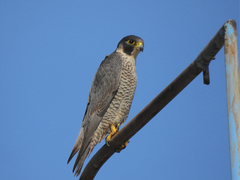Nightjar
Caprimulgidae
The Aves Caprimulgidae, commonly known as the nightjars or "chotacabras" in Spanish, are a fascinating family of birds that are widely distributed across the globe, including the Comunidad Valenciana. These nocturnal beasts are known for their cryptic plumage and exceptional camouflaging abilities, which make them almost invisible during the day when they rest on the ground or perched on branches.
Here are some key characteristics of the Caprimulgidae family:
- Physical Appearance: Nightjars have a slender body, long wings and tails, and very small bills surrounded by bristles. Their plumage is usually a mottled brown, grey, and black which helps them blend seamlessly into their surroundings.
- Behavior: These birds are predominantly nocturnal and crepuscular, becoming active at dawn and dusk. They are known for their silent flight and distinctive calls, which can often be heard at night.
- Diet: Caprimulgids primarily feed on insects and other small invertebrates, capturing their prey in flight using their wide gape.
- Reproduction: Nightjars typically do not build nests. Instead, they lay eggs directly on the ground or in a simple depression, relying on their camouflage to protect their eggs and young from predators.
In the Comunidad Valenciana, these elusive birds can often be found in open woodlands, scrubland, and agricultural areas, especially during the warmer months when they are most active. The "chotacabras europeo" (European nightjar) and "chotacabras cuellirrojo" (Red-necked nightjar) are two species that are of particular interest in the region.







